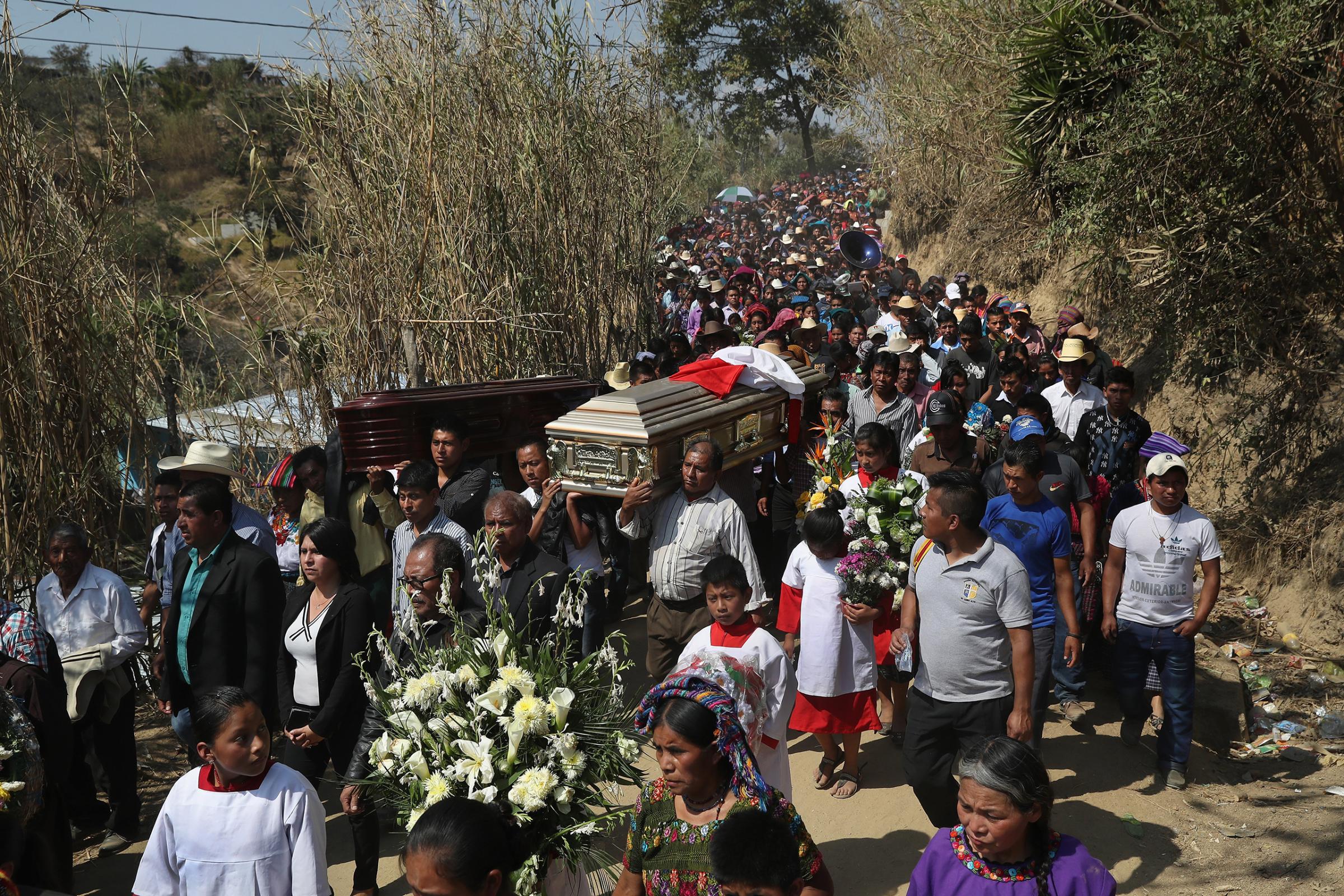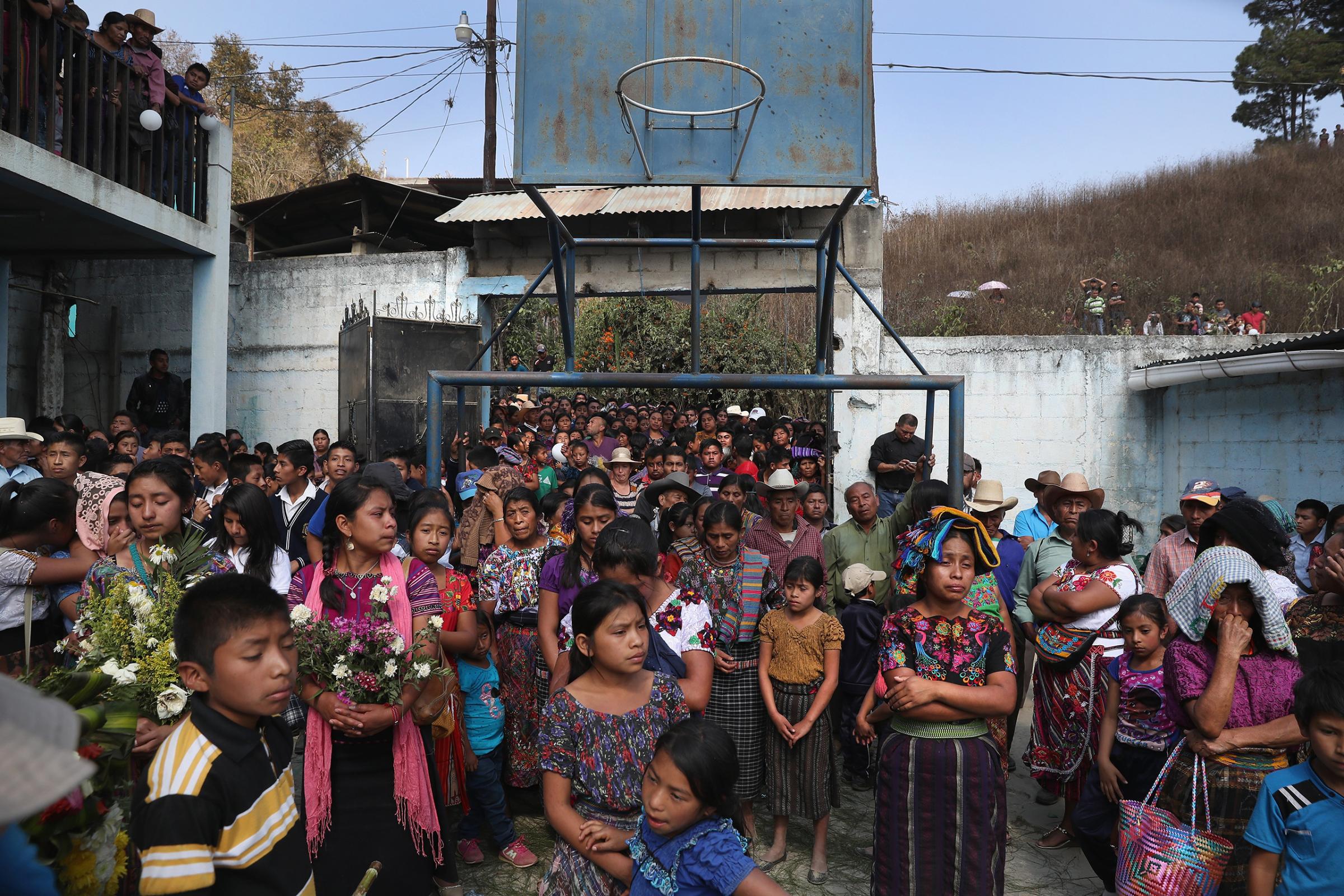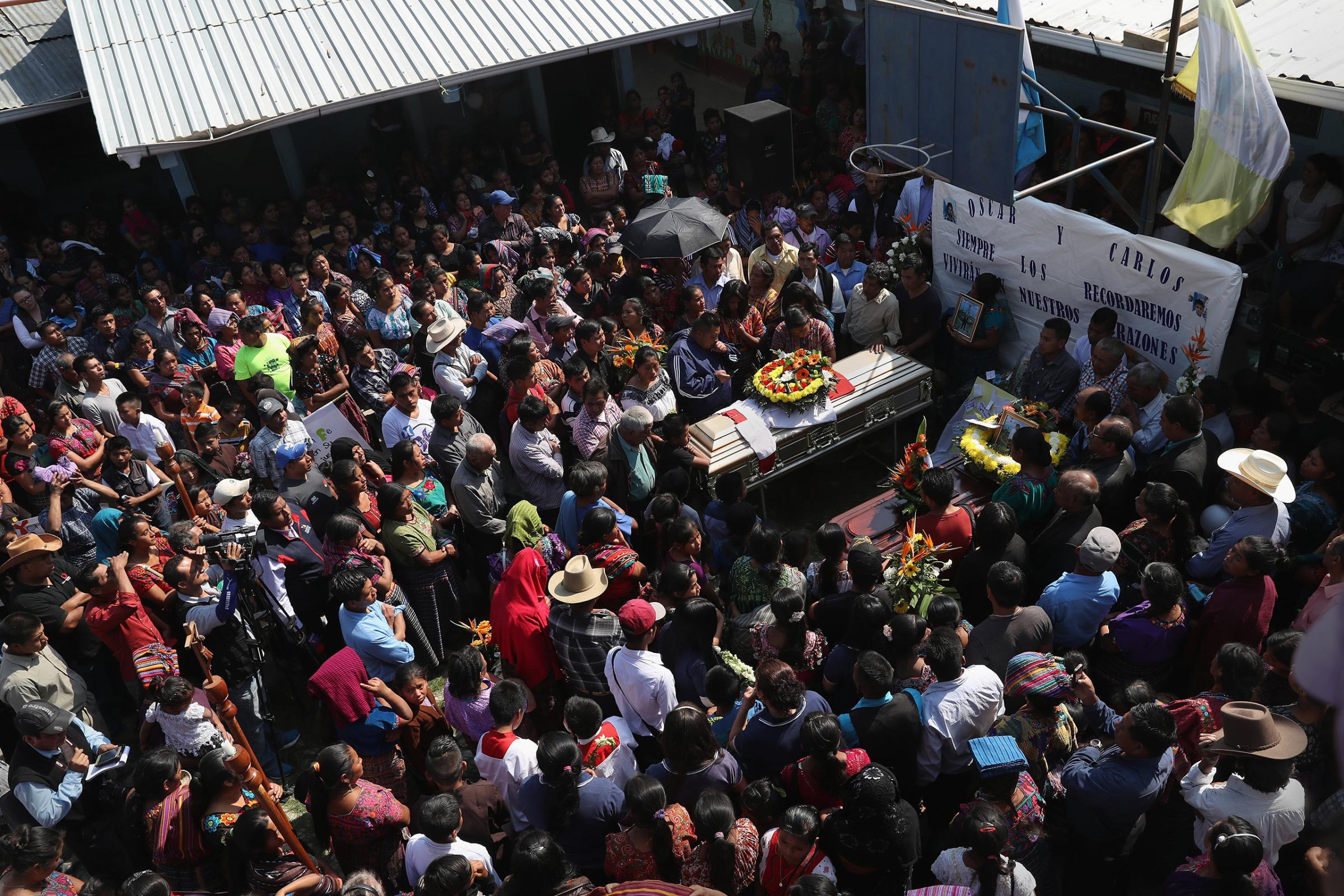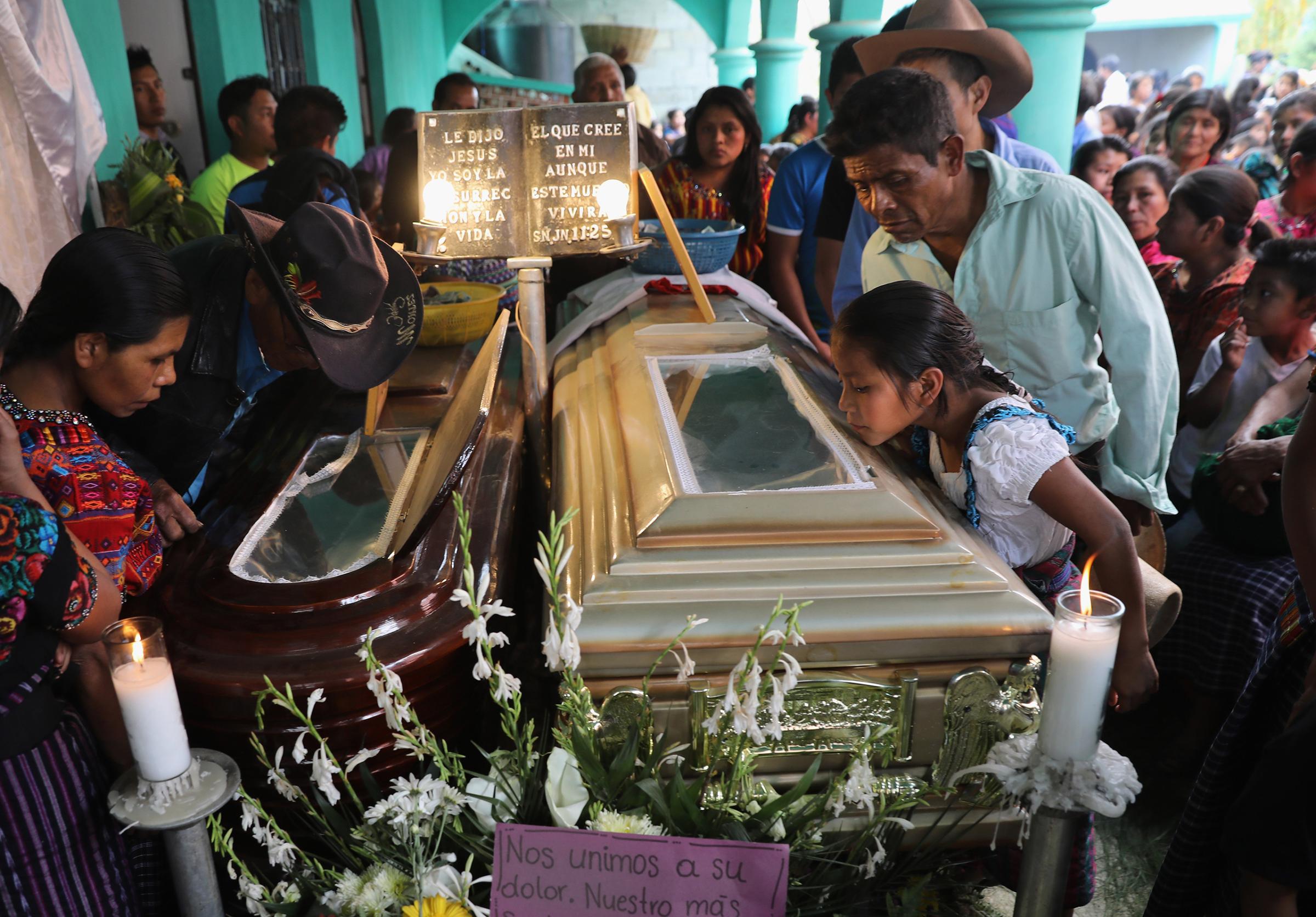
As photojournalists we sometimes see people on the worst days of their lives. In Guatemala this week, I was with families whose sons had been kidnapped on their way to school, their hands and feet bound and their bodies thrown into sacks.
I first learned about the killings on social media, as both my driver and I were following the local Guatemalan news of what’s called the nota roja, usually spot news and mostly about crime. I lived in Mexico and Central America for about seven years earlier in my career, and I still have good friends—both writers and photojournalists—who work throughout that region, who I can count on to help me on the ground when news is breaking. Our profession, even globally, is small and the relationships we make along the way serve us for our entire careers.
I’ve been photographing immigration and border security as a staffer for Getty Images for most of the last decade, and I try to approach the issues broadly. I spend a lot of time on the southern U.S. border, both with the border agents, whose job it is to enforce the law, and with the immigrants in shelters, before and after they attempt to cross. I also reach out to immigrant support groups that aim to make their lives better and help them integrate easier into American society.
This 10-day trip to Guatemala, planned for months with my editor, was part of my effort to show the root causes of illegal immigration and to put a more human face on the issue. The funeral was on the last day.
The village, along an unpaved road on a steep hillside, is near the area of San Juan Sacatepéquez is more than an hour west of Guatemala City. The people are mostly indigenous Kaqchikel-speaking Mayans and they generally don’t want much media in their community. Yet this news was so horrific they were united in their grief and wanted to show their solidarity against such barbarism. Most people there also speak Spanish, so I was able to talk with them.
The wake for the two boys—Carlos Daniel Xiquin, 10, and Oscar Armando Toc Cotzajay, 11—was held in Oscar’s home beginning the day before and straight through until the funeral. The two were neighbors and schoolmates. A crowd of people filled the street outside house.
I introduced myself to a family member who was greeting locals coming to view the bodies that were in glass-topped caskets, side by side. I photographed for a few minutes and then went back outside to give them privacy, as they prepared for a short Christian service. The sound system was playing the theme song to “The Young and the Restless” on loop.
Once the procession started, it wound up the hill. About 2,000 people solemnly walked along, as pall bearers carried the coffins and a small brass band played. It took about an hour for them to reach the boys’ elementary school, where the memorial service was held.
I concentrated on the faces of the people who attended. That two children in their community could be kidnapped while walking to school and then so brutally killed was as terrifying to them as it would be to any of us in any neighborhood. After the service, the procession meandered another two hours to the cemetery on top of a mountain.
Although the boys were from different families, they were both interred in the tomb of Oscar’s family. The children died together and together they will remain. Two of my kids are about that age, so I found this funeral especially hard to cover. I hope that my photographs portrayed them with a sense of dignity, even in such an undignified time.
John Moore is a special correspondent and senior staff photographer for Getty Images, based in New York. He often focuses on issues related to immigration. Follow him on Instagram @jbmoorephoto.
Andrew Katz, who edited this photo essay, is TIME’s International Multimedia Editor. Follow him on Twitter @katz.
Follow TIME LightBox on Facebook, Twitter and Instagram.








More Must-Reads from TIME
- Introducing the 2024 TIME100 Next
- The Reinvention of J.D. Vance
- How to Survive Election Season Without Losing Your Mind
- Welcome to the Golden Age of Scams
- Did the Pandemic Break Our Brains?
- The Many Lives of Jack Antonoff
- 33 True Crime Documentaries That Shaped the Genre
- Why Gut Health Issues Are More Common in Women
Contact us at letters@time.com